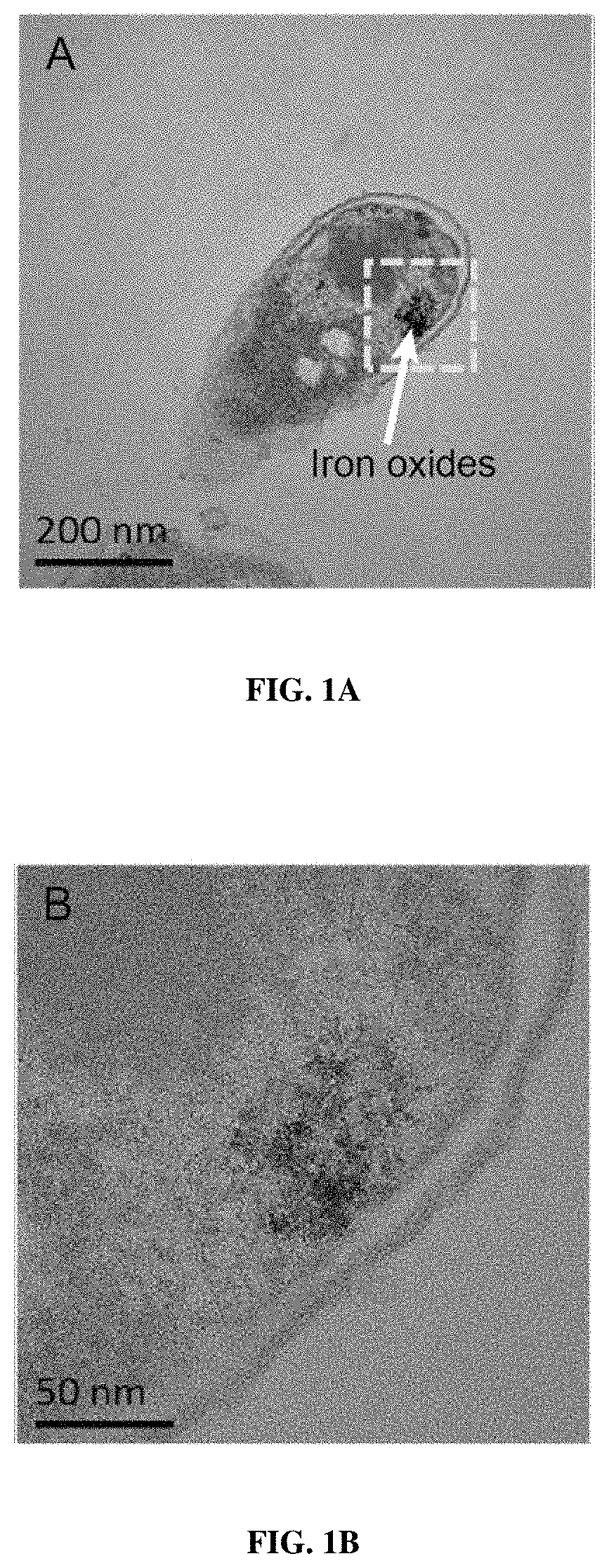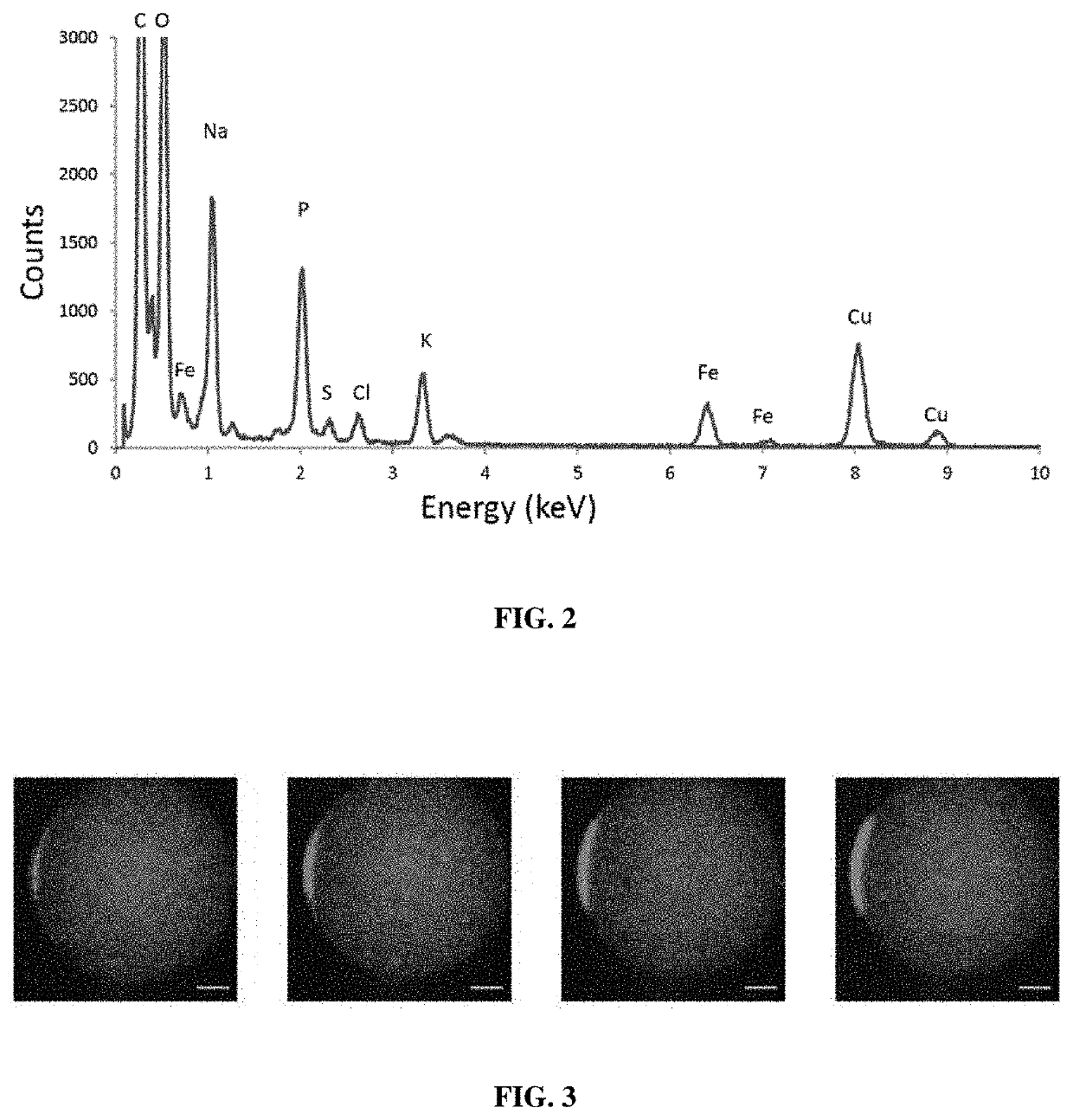Magnetic bacteria, non-therapeutic and therapeutic uses thereof
a technology of magnetic bacteria and non-therapeutic use, applied in the field of recombinant, alive and metabolically active bacteria, can solve the problems of limited use of microbes to solve technological problems, lack of spatial control, and difficulty in detecting such whole-cell biosensors in a complex environment or in the context of diagnostic assays
- Summary
- Abstract
- Description
- Claims
- Application Information
AI Technical Summary
Benefits of technology
Problems solved by technology
Method used
Image
Examples
example 1
of MagEcoli and Uses Thereof
1—Materials and Methods
1.1—Chemicals
[0233]Kanamycin, Chloramphenicol, Ampicillin, Spectinomycin, Mohr's Salt, LB browth, M9 Browth, Glycerol, Agar, Sucrose, IPTG, Mineral oil, DMSO, Iron citrate (III), PBS, EDTA, Imidazole, Lysozyme, Triton X100, AEBSF, Protease inhibitor cocktail were purchased from SIGMA-ALDRICH®.
[0234]Anhydro tetracyclin was a gift from Olivier Espeli; Arlacel P135 was purchased from CRODA®; AHL was purchased from BERTIN BIOREAGENT®; Optiprep was purchased from StemCell®; BSA was purchased from BIO-RAD®.
1.2—Molecular Vectors and Strains
[0235]The Pyrococcus Furiosus ferritins were fused at their N-terminal to mCherry or Emerald GFP (EmGFP) and were cloned into pet28, pGBM3 / 4 / 5 / 6, and pet28duet plasmids.
[0236]Quorum sensing genes (pLux01 and pTD103luxIsfGFP) and specific adhesion genes (pDSG375 and pDSG419) were purchased from ADDGENE®.
TABLE 1Plasmids used hereinPlasmidGene expressionResistancepet28_mCherrry-FerritinPyrococcusKanamycinFu...
example 2
[0315]In order to assess whether the magnetic bacteria according to the invention (MagEcoli) could be used for biotechnological purposes, the survival and maintenance of their magnetic properties were assayed in vivo. Their resistance to the intestine of a simple model organism, such as C. elegans, was assessed. Then, the effect of MagEcoli on the relaxation times was measured by NMR, in order to evaluate whether it could be good reporter agents for MRI.
1—Materials and Methods
1.1—Strains and Plasmids
[0316]The bacteria are Rosetta, BL21 or MG1655.
[0317]For the study with C. elegans and the NMR measurements the plasmid used are the one described in example 1. The biomineralization process was the same one as described in example 1.
1.2—Feeding of C. Elegans
[0318]100-200 μL of bacteria were spread at the center of fresh C. elegans' petri dish with Kanamycin. A small agar cube with worms was transferred on the dish. C. elegans and bacteria were let in contact for 6-24 hours at 20° C., d...
example 3
[0332]The iron cellular content of biomineralized MagEcoli with 2 mM or 4 mM iron has been assessed following the protocols disclosed in “Standard Methods for Water and Wastewater Analysis”, APHA 1992, as based on phenanthroline absorption. In addition, the number of iron atoms may be evaluated at the nanocage level (expressed in iron atoms per 24 ferritins or ferritin subunits).
[0333]Results are depicted in Table 3 below:
TABLE 3Concentration of Number of ironiron added in the Cellular concentration atoms perbiomineralizationof iron uponnanocage (24mediumbiomineralizationferritins)0 mMBelow the detection threshold—2 mM2 mM1,0004 mM3 mM1,500
[0334]As seen in Table 3, the intracellular concentration of iron upon mineralization is high, and mainly accounts for a high level of iron atom per nanocage.
PUM
| Property | Measurement | Unit |
|---|---|---|
| Molar density | aaaaa | aaaaa |
| Molar density | aaaaa | aaaaa |
| Concentration | aaaaa | aaaaa |
Abstract
Description
Claims
Application Information
 Login to View More
Login to View More - R&D
- Intellectual Property
- Life Sciences
- Materials
- Tech Scout
- Unparalleled Data Quality
- Higher Quality Content
- 60% Fewer Hallucinations
Browse by: Latest US Patents, China's latest patents, Technical Efficacy Thesaurus, Application Domain, Technology Topic, Popular Technical Reports.
© 2025 PatSnap. All rights reserved.Legal|Privacy policy|Modern Slavery Act Transparency Statement|Sitemap|About US| Contact US: help@patsnap.com



